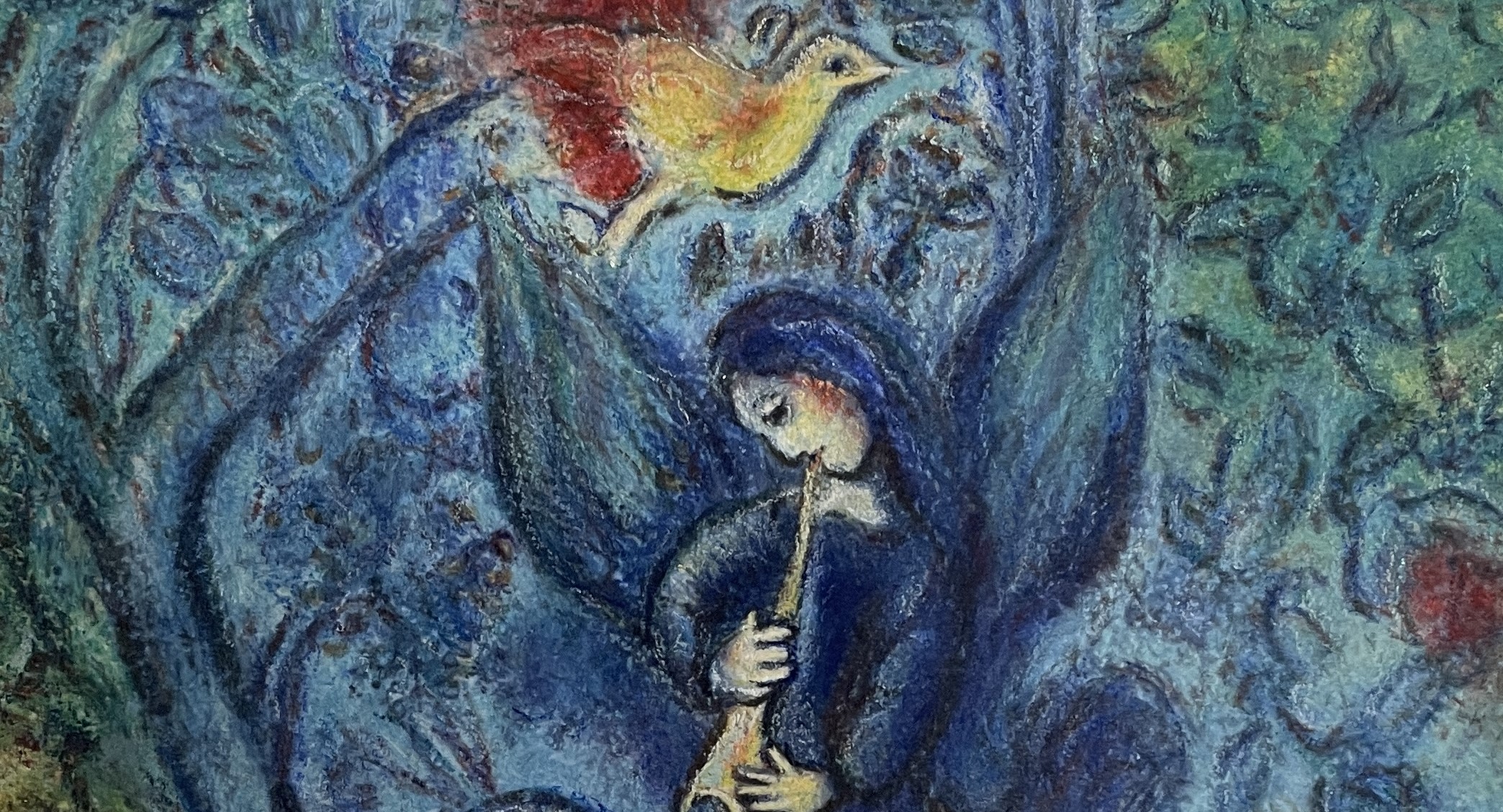日本語-Englishー台灣華語
岸田劉生「切通之写生」
切通之写生(切り通しの坂道)をはじめて国立近代美術館で見た時、私はその急な登り坂と土量に思わず重圧を感じたものだ。「切通之写生」は銀座の生家から代々木に移った劉生が、土の露わになった造成地の何気ない坂道を描いたものである。現在は見る影もなくなっているが、渋谷区代々木四丁目付近に当たる。昔その近くに私の事務所があった。坂道を真下から見上げる構図は、普通では絵になりにくいが、新しく開墾された道の赤土が生々しい質感で描かれ、下から押し上げるような坂道の力が見事に表現されている。緻密な写実のように見えながら、左側の白壁と右上の土手は天に向かって極端に折れ曲がって描かれている。色数は黄土系統の色に制限されていが、息苦しい程鮮やかな青い空が一種非現実的な雰囲気を醸し出している。劉生はよくデューラーに影響を受けたと言われるが、それはデューラーに決して引けをとらない、素晴らしい絵だ。
日本のジャーナリズムの草分けであった岸田吟香の子として生まれた劉生は、父に負けずに振れ幅の大きな人であった。兄弟の中に精神を病んでしまった者がいた劉生は、ゴッホの狂気を他人事として考えることが出来なかった。狂気への不安を抱え、ゴッホの人生に自らを重ねるように制作に没頭しないではいられなかった。その後一転してデューラーやヤン・ファン・エイクの古典絵画に強い感銘を受け、独自の写実へと向かう。劉生が言うクラシックの感化をうけた時代を突き抜けて、「切通之写生」や「麗子像」の写実的神髄をこれでもかと感じさせる作品に辿り着く。劉生が目指したのは、高橋由一にはじまるプリミティヴな写実描写ではない。それは迫真の細密描写を推し進めながら、「写実を超えた美」の境地を見出すことである。 麗子像によって劉生は一つの境地に到達している。劉生はそれをこう語っている。「麗子の肖像を描いてから、僕はまた一段ある進み方をした事を自覚する。今迄のものはこれ以後に比べると唯物的な美が主で、これより以後のものはより唯心的な域が多くなっている」と。対象をデフォルメすることである種の美を生み出している。彼自身はそれを東洋的な「デロリとした美」と表現している。麗子像には確かに可憐さよりは、どこか妖しい気配が漂っている。そこには一種レオナルドのモナ・リザの微笑みに通じるものがある。劉生はその根源をこう語っている。「愛が美を生むのだ」と。
麗子は写真で見るとごく普通のかわいらしい子であるが、愛が極まった時、人はそこに霊魂が宿るのを見るのかもしれない。劉生のもう一歩深く這入らなくてはという執念が、真をつかもうとする意識が、対象の核心に迫る。日本の油絵は未だに岸田劉生を超えられない。 後年、酒と茶屋遊びに溺れ退廃的な生活を送った劉生であるが、西洋画と東洋画の狭間で自己の絵画表現を巡る深い葛藤があったに違いない。鎌倉に転居してからは、南画風の作品や日本画を意識した油彩画を描きはじめるが、渡欧計画を果たせぬまま三十八才の若さで急死してしまう。劉生が仮に渡欧を果たし、直に欧州の伝統的な絵画に触れていたならば、いかなる美に到達したのか。複製画であそこまで到達した劉生のことである、きっと途方も無く遠い境地に辿り着いたに違いない。
Road Cut through a Hill
When I first saw “Kiritoshi no Shasei” (The Sketch of the Cut-Through Slope) at the National Museum of Modern Art, I was involuntarily struck by the pressure of its steep ascent and the volume of earth. “Kiritoshi no Shasei” depicts an inconspicuous slope of a construction site where the soil is exposed, drawn by Ryusei who moved from his birthplace in Ginza to Yoyogi. Although it has now disappeared without a trace, it was located near Yoyogi 4-chome in Shibuya Ward. My office used to be near there. The composition, looking up the slope from directly below, is not easily turned into a picture in ordinary circumstances, but the freshly cultivated red soil of the road is depicted with a vivid texture, and the force of the slope pushing up from below is splendidly expressed. While it appears to be a meticulous realism, the left side’s white wall and the embankment on the upper right are drawn bending extremely towards the sky. The color palette is limited to ochre tones, but the vividly suffocating blue sky creates a somewhat unreal atmosphere. Ryusei is often said to have been influenced by Dürer, but it is a wonderful painting that is in no way inferior to Dürer’s.
Born as the son of Kishida Gin’ka, a pioneer of Japanese journalism, Ryusei was a person of great swings, not less than his father. Ryusei, who had a sibling suffer from mental illness, could not consider Van Gogh’s madness as someone else’s issue. Harboring anxiety towards madness, he could not help but immerse himself in creation, overlaying his life with that of Van Gogh. Later, he was profoundly moved by the classical paintings of Dürer and Jan van Eyck, leading him towards his unique realism. Breaking through the era influenced by the classics, Ryusei reached the essence of realism in works like “Kiritoshi no Shasei” and “Portrait of Reiko,” beyond the primitive realism that began with Takahashi Yuichi. What Ryusei aimed for was not mere detailed realism but to find a realm of beauty that transcends realism.
With “Portrait of Reiko,” Ryusei reached a certain realm. He has stated, “After drawing the portrait of Reiko, I became aware that I had progressed to a certain extent. Compared to what I had done before, those were mainly materialistic beauties, and what came after has a lot more of an idealistic realm.” By deforming the subject, he created a certain beauty. He himself described it as an Oriental “delirious beauty.” Indeed, “Portrait of Reiko” exudes not so much daintiness as a somewhat eerie aura. It has something in common with the smile of Leonardo’s Mona Lisa. Ryusei articulated this foundation as “Love creates beauty.” Reiko might look like an ordinary cute girl in photographs, but when love is at its peak, one might see a soul residing in her. Ryusei’s obsession to delve deeper, his consciousness to grasp the truth, approaches the core of the subject. Japanese oil painting has yet to surpass Kishida Ryusei.
In his later years, although Ryusei led a decadent life indulging in alcohol and visits to tea houses, there must have been deep conflict within him about his artistic expression between Western and Eastern painting. After moving to Kamakura, he began to draw oil paintings with a consciousness of Japanese painting and works in the style of Southern School painting, but he died suddenly at the young age of thirty-eight without fulfilling his plans to travel to Europe. Had Ryusei achieved his journey to Europe and directly encountered traditional European painting, what kind of beauty would he have reached? Given what Ryusei achieved with reproductions, he surely would have reached an unimaginably distant realm.
岸田劉生《切通之寫生》
第一次在國立近代美術館看到《切通之寫生》(切通的坡道)時,我不禁對其急峭的上坡和大量的土壤感到了壓迫。《切通之寫生》描繪了從銀座的祖居搬到代代木的劉生,對一條顯露泥土的普通坡道的描繪。雖然現在已經看不到影子,但它位於澀谷區代代木四丁目附近。我以前的辦公室就在那附近。從坡道底部向上看的構圖,通常不易成畫,但新開墾的道路上的紅土以生動的質感被描繪出來,坡道從下方推上來的力量被巧妙地表達出來。儘管看起來像是細膩的寫實,但左側的白牆和右上的土堤向天空極端彎曲地描繪出來。顏色以黃土系列為限,但令人窒息的鮮艷藍天帶出一種非現實的氛圍。劉生常被說受到杜勒的影響,這是一幅毫不遜色於杜勒的傑作。
作為日本新聞業開拓者岸田吟香之子的劉生,他的生活振幅不亞於其父。在兄弟中有患有精神疾病的劉生,無法將梵谷的瘋狂視為別人的事。他懷著對瘋狂的不安,無法不全身心投入到創作中,將自己的生活與梵谷的生活重疊。然後,他突然對杜勒或揚·凡·艾克的古典繪畫產生了深刻的印象,轉向獨特的寫實主義。劉生說,他受到古典的啟發,突破了那個時代,到達了《切通之寫生》和《麗子像》等作品的寫實精髓。劉生追求的不是以高橋由一為首的原始寫實描繪,而是在推進逼真的細節描繪的同時,尋找「超越寫實的美」。
通過《麗子像》,劉生達到了一個新的境界。劉生這樣說:「畫了麗子的肖像後,我自覺到了一種新的進步。與之前相比,之前的作品主要是唯物的美,而之後的作品更多的是唯心的領域」。他通過對對象的變形創造了一種美。他自己將其描述為東方的「迷離美」。《麗子像》確實比可愛更多了一種神秘的氣息。其中有一些與達文西的蒙娜麗莎的微笑相通的東西。劉生這樣描述其根源:「愛創造了美」。麗子在照片中看起來是非常普通的可愛女孩,但當愛達到極點時,人們可能會看到靈魂的存在。劉生的堅持不懈,試圖捕捉真實,是他進入對象核心的努力。日本的油畫至今未能超越岸田劉生。
晚年,劉生沉迷於酒精和茶屋生活,過著頹廢的生活,但毫無疑問,他在西洋畫和東洋畫之間對自己的繪畫表達進行了深刻的掙扎。搬到鎌倉後,他開始畫南畫風格的作品和有意識地畫油畫風格的日本畫,但他沒能實現前往歐洲的計畫,就在三十八歲時突然去世。如果劉生能夠實現前往歐洲,直接接觸到歐洲的傳統繪畫,他會達到什麼樣的美學境界?考慮到他僅通過複製畫就達到了那樣的境界,他肯定會達到一個難以想象的境界。


